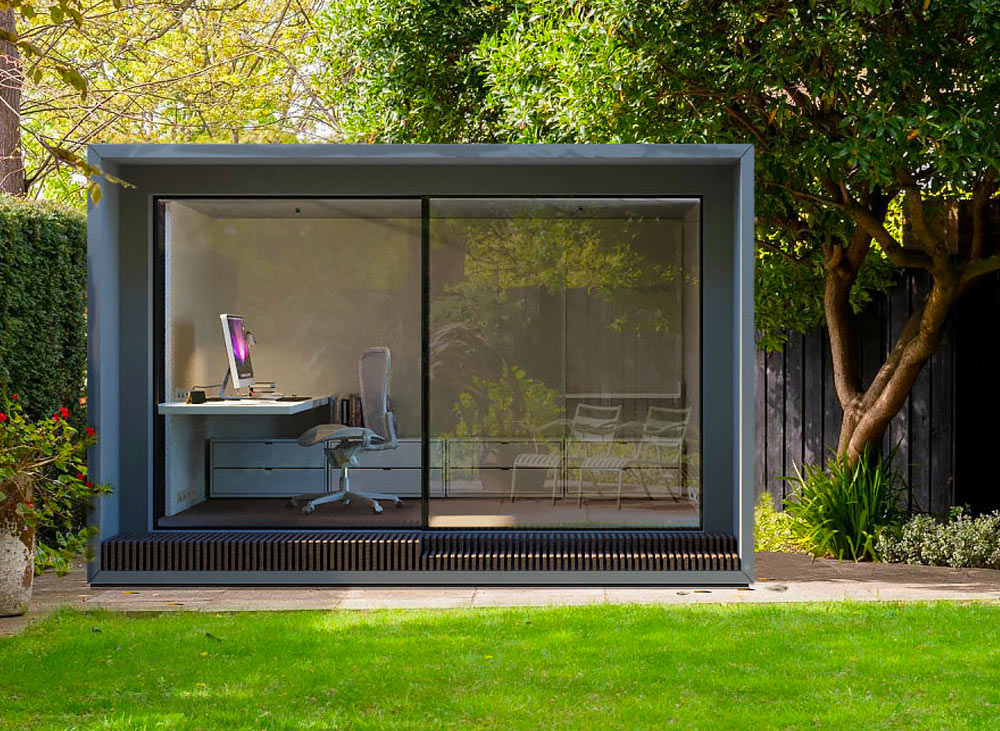
Modul M1 - small space standard - photo credit - Modulr.space
Garden rooms have become an increasingly popular choice with homeowners seeking to create additional space, especially those working from home who require a degree of separation from the goings-on of the main house.
Their popularity has, however, given rise to a lot of uncertainty surrounding planning matters.
Here, we intend to clear up some of the confusion and outline what can be built without planning permission.
A garden room can only be built without planning permission if your property enjoys permitted development rights. If it does not, you will require planning permission.
Permitted development rights are a national grant of planning consent by Parliament which allows homeowners (and some businesses) to carry out certain types of building work without the need for planning permission.
Rights are granted in the form of General Development Planning Orders (GDPOs) which are applied separately for England, Wales, Scotland and Northern Ireland.
Most houses benefit from permitted development rights, and you can usually build a garden room without planning permission if your design meets the latest technical guidance.
If you live in a house in a conservation area, your permitted development rights may be restricted by an ‘article 4 direction’ which is an order used by local authorities to control certain types of development.
Article 4 directions vary from one conservation area to the next. You may be able to build your garden room under permitted development or you may require planning permission. It is important to check with your local planning authority before you start.
Restrictions also apply to houses in World Heritage Sites, National Park, Areas of Outstanding National Beauty or the Broads.
The following types of property do not have permitted development rights, or their rights are superseded by other planning controls.
If you live in one of the above, you will require planning consent from your local council to build a garden room.
An architect will be able to check local planning requirements to see if your garden room requires planning permission.
Provided your property enjoys permitted development rights, you can build a garden room without planning permission if the design meets the following criteria.
Size
Positioning
External
In addition to the size and location of your garden room, you will also need to consider its intended use, as certain uses require full planning permission.
Technical guidance states that an outbuilding (which a garden room falls under) must have ‘a purpose incidental to the enjoyment of the house’ and cannot be used as separate self-contained accommodation or primary living accommodation.
A garden room must therefore be dependent on, and subservient to, the main house.
Permitted incidental uses include (non-exhaustive):
Garden rooms cannot be built without planning permission if they contain a:
These are deemed non-incidental as they could create self-contained living accommodation that is separate from the main house.
This is a planning grey area.
You could argue that a toilet or shower room is supporting an incidental use, for example, a home office needs a WC, or a home gym requires a shower room.
However, permitted development guidelines state that ‘a purpose incidental to a house would not cover… the use of an outbuilding for primary living accommodation such as a bedroom, bathroom, or kitchen.’
As a result, some local planning authorities will view the inclusion of a toilet, and other wash facilities, as an attempt to establish self-contained use and request that you seek full planning permission.
Applying for a Lawful Development Certificate will confirm if your proposals are lawful.
If you are using the garden room as a personal office, yes.
If your business operations cause increased disturbance to your neighbours, your council may insist you apply for planning permission for continued use.
Again, a Lawful Development Certificate will confirm lawfulness.
While development that falls under permitted development does not require planning approval, you may want to apply for a Lawful Development Certificate (LDC) before you start building work to give you peace of mind that your proposals are lawful.
If you are unsure your proposals comply, applying for a LDC will either confirm they are lawful, or identify changes that need to be made so limits and conditions are met.
Even if you are sure your proposals are within the rules, should you decide to sell your property an LDC will help prove to potential buyers that your development is lawful.
You can apply to your local council through the planning portal.
Lawful Development Certificate applications cost £103 in England, £300 in Scotland and £85 in Wales, and take up to 8 weeks to process.
The drawn information attached to the application is like a householder planning application, however the application process is a lot simpler.
If your application for an LDC is refused, you can revise your plans in line with your council’s recommendations and submit a free go, or appeal to the Planning Inspectorate.
Garden rooms – an architect’s guide
Five modular garden room and house companies founded by architects
Twenty inspirational architect designed garden rooms
About the author: Aron Coates is an architect with over two decades of experience, encompassing projects ranging from the restoration of historic buildings to the design of contemporary homes.
The information provided in this article is intended for general guidance and educational purposes only. At Designs in Detail, we advise you appoint a skilled residential architect to provide specific expert advice for your project.